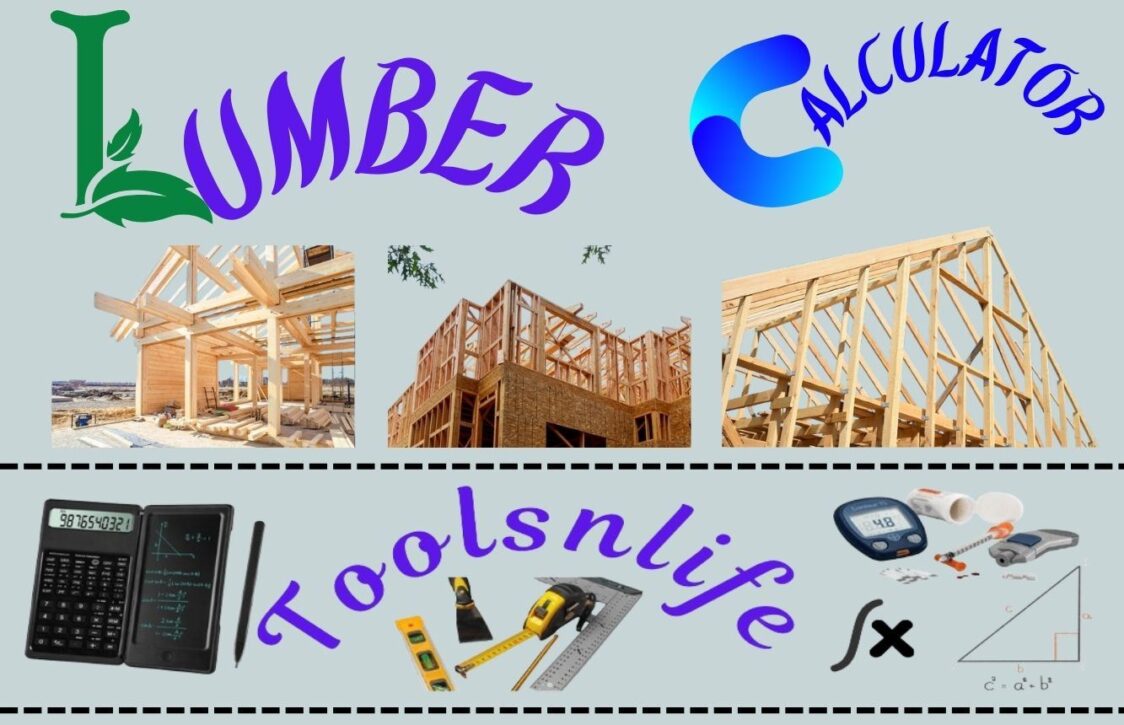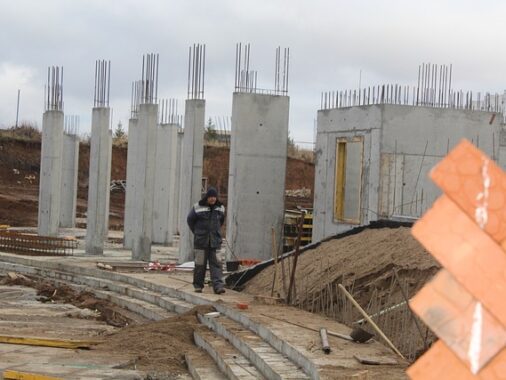Lumber Shape
Understanding Lumber Measurements: Board Feet vs. Linear Feet
When working with lumber, understanding the difference between board feet and linear feet is essential for accurate project planning and cost estimation. These two measurement systems serve different purposes in woodworking and construction.
What is a Linear Foot?
A linear foot is a straightforward measurement of length. One linear foot equals exactly 12 inches of length, regardless of the wood’s width or thickness. This measurement is particularly useful when you need pieces of consistent dimension, such as trim, molding, or deck boards sold by length.
What is a Board Foot?
A board foot is a volume measurement used specifically for lumber. One board foot equals:
- 1 foot in length
- 1 foot in width
- 1 inch in thickness
This translates to 144 cubic inches of wood (12″ × 12″ × 1″). Board foot measurements are standard for hardwoods and dimensional lumber, as they account for all three dimensions of the wood.
When to Use Each Measurement
Use linear feet when:
- Purchasing materials like trim, molding, or decking
- The width and thickness are consistent across pieces
- You’re primarily concerned with length requirements
Use board feet when:
- Working with hardwoods or rough lumber
- The width and thickness vary between pieces
- You need to calculate the total volume of wood required
- Comparing prices between different lumber suppliers
Practical Examples
Let’s consider some real-world examples:
Example 1: A 1×6 board that’s 8 feet long contains 4 board feet: (1″ × 6″ × 96″) / 144 = 4 board feet.
Example 2: A 2×4 that’s 12 feet long contains 8 board feet: (2″ × 4″ × 144″) / 144 = 8 board feet.
Example 3: A piece of oak measuring 1.5″ thick, 9″ wide, and 6 feet long contains 6.75 board feet: (1.5″ × 9″ × 72″) / 144 = 6.75 board feet.
Lumber Terminology Glossary
Common Lumber Terms Explained
Board Foot: A measurement of lumber volume equal to 144 cubic inches (12″ × 12″ × 1″).
Linear Foot: A measurement of length only, equal to 12 inches.
Nominal Size: The name by which lumber is known and sold (e.g., 2×4), which differs from its actual dimensions.
Actual Size: The true dimensions of lumber after drying and planing (e.g., a 2×4 actually measures approximately 1.5″ × 3.5″).
Dimensional Lumber: Wood cut to standardized widths and depths, specified in inches.
Hardwood: Wood from deciduous trees (like oak, maple, or walnut) typically used for furniture and flooring.
Softwood: Wood from coniferous trees (like pine, cedar, or fir) typically used for construction framing.
Rough Lumber: lumber that hasn’t been planed smooth, maintaining its full nominal dimensions.
S4S: “Surfaced four sides” – lumber that has been planed smooth on all four faces.
Knot: A circular pattern in wood where a branch grew from the trunk.
Grain: The direction, size, arrangement, and appearance of wood fibers.
Moisture Content: The amount of water in wood, expressed as a percentage of the wood’s oven-dry weight.
Quarter Sawn: Lumber cut radially from the log, resulting in a straight grain pattern and greater stability.
Plain Sawn: The most common cutting method, producing a characteristic cathedral grain pattern.
Tips for Accurate Lumber Calculations
- Always measure twice and calculate once to minimize errors
- Consider adding 10-15% extra lumber for waste, especially for complex projects
- Verify whether your supplier uses nominal or actual dimensions in their pricing
- Check moisture content if working with projects requiring dimensional stability
- Understand the difference between rough and finished lumber dimensions
Practical Lumber Calculation Examples
Example 1: Deck Building
Imagine you’re building a 12′ × 16′ deck using 2×6 boards:
- Deck area: 192 square feet
- Using 16-foot long boards
- Spacing: ¼” between boards
Calculation: You’ll need approximately 24 boards (16 linear feet each) for a total of 384 linear feet. In board feet: (2″ × 6″ × 384′) / 12 = 384 board feet.
Example 2: Bookshelf Project
Building a simple 3-shelf bookcase from 1×12 pine:
- Shelves: 3 pieces at 36″ long
- Sides: 2 pieces at 72″ long
- Total linear feet: (3 × 3′) + (2 × 6′) = 21 linear feet
Calculation: Board feet calculation: (1″ × 12″ × 252″) / 144 = 21 board feet. Always add extra for mistakes – purchase 25 board feet.
Example 3: Hardwood Table Top
Creating a dining table top from 8/4 walnut:
- Dimensions: 42″ × 84″ × 2″ thick
- Using boards averaging 8″ wide
- Approximately 6 boards needed
Calculation: Total board feet: (2″ × 42″ × 84″) / 144 = 49 board feet. With waste, purchase 55 board feet of walnut.
Example 4: Picture Frames
Making 10 picture frames from 1×2 poplar:
- Each frame: 4 pieces at 24″ long
- Total length: 10 frames × 4 pieces × 2′ = 80 linear feet
Calculation: Since this is sold by linear foot, you’d purchase 80 linear feet of 1×2 poplar. In board feet: (1″ × 2″ × 960″) / 144 = 13.33 board feet.
Lumber Purchasing Guide: What to Consider
1. Understanding Lumber Grades
Lumber is graded based on quality and appearance:
- FAS (First and Second): Highest quality, suitable for furniture
- Select: Good appearance with minor defects
- #1 Common: More defects but usable for many projects
- #2 Common: Contains knots and defects, suitable for painting
- Construction Grade: For structural applications where appearance doesn’t matter
2. Moisture Content Considerations
The moisture content of lumber affects its stability:
- Green lumber: High moisture content (over 30%), requires drying
- Air-dried: Moisture content around 15-20%
- Kiln-dried: Moisture content 6-8%, ideal for indoor projects
- For furniture, use kiln-dried wood to prevent warping
- For outdoor projects, pressure-treated lumber has higher moisture content
3. Calculating Waste Factor
Always purchase extra lumber to account for:
- Cutting mistakes
- Natural defects in the wood
- Unexpected project changes
- Future repairs
Recommended waste factors:
- Simple projects: 10% extra
- Complex projects: 15-20% extra
- Projects with many cuts: 25% extra
- When working with expensive hardwoods: 30% extra to allow for selective cutting
4. Price Comparison Tips
When comparing lumber prices:
- Convert all prices to board feet for accurate comparison
- Consider delivery costs if purchasing large quantities
- Check for volume discounts when buying larger quantities
- Factor in the time and cost of preparing rough lumber
- Remember that higher-grade lumber costs more but may yield better results
- Consider the true cost including waste factor
Our lumber calculator helps you make these comparisons accurately by providing both linear feet and board feet measurements.
Frequently Asked Questions About Lumber Calculation
Why is there a difference between nominal and actual lumber dimensions?
Nominal dimensions refer to the size of the wood before it’s dried and planed. The drying process causes shrinkage, and planing smooths the surfaces, reducing the actual dimensions. For example, a 2×4 nominally measures 2″ by 4″, but its actual dimensions are approximately 1.5″ by 3.5″.
How do I calculate board feet for irregular-shaped wood?
For irregular pieces, calculate the volume by measuring the average width, thickness, and length. Multiply these three dimensions and divide by 144 to get board feet. For very irregular pieces, you might need to use water displacement methods to determine volume.
Should I use linear feet or board feet when purchasing lumber?
It depends on the type of project and lumber. Use linear feet for dimensional lumber with consistent cross-sections (like 2×4s or deck boards). Use board feet for hardwoods or when the width and thickness vary significantly between pieces.
How much extra lumber should I buy for waste?
The amount of extra lumber needed depends on the project complexity and your experience level. For simple projects, add 10% extra. For complex projects with many cuts, add 15-20%. When working with expensive hardwoods or intricate designs, consider 25-30% extra to allow for selective cutting and mistakes.
Why is lumber priced differently per linear foot versus per board foot?
Pricing per linear foot is simpler and common for dimensional lumber with consistent cross-sections. Pricing per board foot accounts for the actual volume of wood, which is more accurate for hardwoods and rough lumber where dimensions can vary significantly.
How does moisture content affect lumber calculations?
Moisture content affects the weight and dimensions of lumber. Wood shrinks as it dries, so projects requiring precise dimensions should use kiln-dried lumber (6-8% moisture content). For outdoor projects, pressure-treated lumber has higher moisture content but is resistant to rot and insects.
Using the Lumber Calculator on Mobile Devices
Our lumber calculator is fully optimized for mobile use, making it easy to calculate lumber needs right at the store or job site. Here are some tips for mobile users:
Mobile-Friendly Features
- Touch-friendly input fields and buttons
- Responsive design that works on all screen sizes
- Quick unit conversion for on-the-fly calculations
- Visual lumber representation adjusts to your dimensions
- Share results directly from your mobile device
Tips for Mobile Use
- Bookmark the calculator for quick access at lumber yards
- Use the share feature to send calculations to colleagues
- Take screenshots of results for reference while shopping
- Switch between units to match how your supplier prices lumber
- Use the refresh button to quickly start new calculations
Pro Tip: Save this page to your phone’s home screen for instant access without needing an internet connection at the lumber yard!






